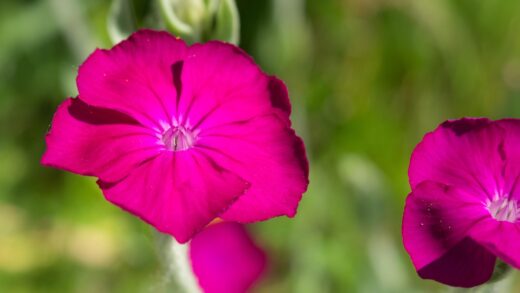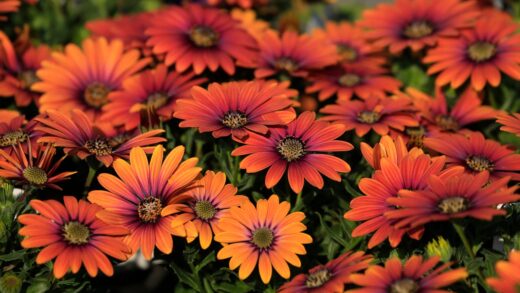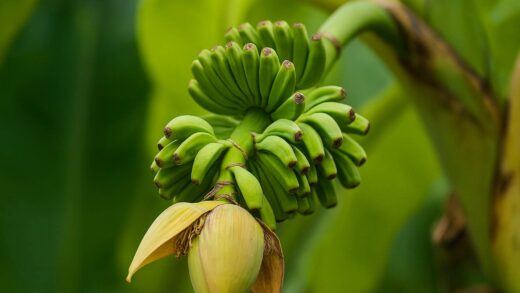Understanding the water requirements and developing an appropriate irrigation strategy for American pokeweed is relatively simple due to its remarkable resilience and adaptability. This plant is renowned for its toughness and its ability to thrive in a wide range of conditions with minimal intervention from the gardener. Its secret lies in the development of a deep and fleshy taproot, which acts as a substantial reservoir for water and nutrients. This allows the plant to withstand periods of drought that would cause many other garden perennials to wilt and suffer. For the most part, a mature, established American pokewweed is a self-sufficient plant that requires very little, if any, supplemental watering.
Once a pokeweed plant has made it through its first growing season, its water needs decrease dramatically. The extensive root system, anchored by the main taproot, is incredibly efficient at seeking out moisture deep within the soil profile, far below the surface where most other plants’ roots are concentrated. This makes it exceptionally well-suited to gardens that experience hot, dry summers. In most temperate climates with average rainfall, you will likely never need to water a mature pokeweed. Overwatering is a far greater risk than underwatering, as consistently saturated soil can promote root rot in the massive taproot, which can be fatal to the plant.
The plant itself provides clear visual cues regarding its water status. A healthy, well-hydrated pokeweed will have large, turgid leaves and firm, upright stems. If the plant begins to experience extreme drought stress, the leaves may start to droop or wilt during the hottest part of the day. However, you should not be too quick to reach for the hose. Often, the leaves will recover on their own overnight as temperatures cool and the plant draws on its deep soil moisture reserves. Only if the wilting persists into the morning on consecutive days should you consider providing a deep, infrequent soaking.
The key to any irrigation you do provide is to water deeply rather than frequently. A light, shallow sprinkling of water will only moisten the top few inches of soil, encouraging the development of a shallow root system and doing little to benefit the deep taproot. Instead, when you do water, apply it slowly and for a prolonged period, allowing the moisture to penetrate deeply into the soil. This encourages the roots to continue to grow downwards, reinforcing the plant’s natural drought tolerance. One deep watering every few weeks during a severe drought is far more effective than a little bit of water every few days.
Understanding its drought tolerance
The exceptional drought tolerance of American pokeweed is one of its most defining horticultural characteristics. This resilience is not a matter of luck, but a direct result of its physiological and morphological adaptations, chief among them being its formidable taproot. This root, which can grow to be as thick as a human arm and penetrate several feet into the ground, is the plant’s primary survival mechanism. It functions like a built-in storage organ, holding reserves of water that the plant can draw upon when the upper layers of the soil have completely dried out. This is why you can often see pokeweed standing green and lush in abandoned fields during mid-summer, while the surrounding grasses have turned brown.
More articles on this topic
The plant’s large leaves also play a role in its water management, though it may seem counterintuitive. While large leaves can increase water loss through transpiration, they also create a dense canopy that shades the ground directly beneath the plant. This shade helps to cool the soil, reduce surface evaporation, and suppress the growth of competing weeds that would otherwise vie for the available moisture. This self-mulching effect helps to conserve water in the plant’s immediate root zone, further contributing to its ability to withstand dry conditions.
The natural life cycle of pokeweed is also adapted to surviving dry periods. It does the majority of its rapid vegetative growth in the spring and early summer when rainfall is typically more abundant. By the time the hottest and driest part of the summer arrives, the plant has already achieved most of its size and has a fully developed root system capable of sustaining it. Its focus shifts from growth to flowering and fruiting, which requires less water than the initial phase of rapid biomass production. This alignment of its growth phases with typical weather patterns is a key adaptive strategy.
For the gardener, this inherent drought tolerance means that pokeweed is an excellent candidate for low-water gardens, xeriscaping, or simply for those difficult, dry corners of the landscape where little else will thrive. It is a plant that frees you from the chore of frequent watering. By understanding that its resilience comes from deep within the ground, you can learn to trust the plant to take care of itself. Your role is not to coddle it with constant moisture, but to provide the right conditions for it to establish its powerful root system, after which you can step back and let it perform.
Irrigation during establishment
While mature American pokeweed plants are incredibly drought-tolerant, newly planted seedlings or transplants have very different water requirements. During its first year in the garden, a young pokeweed plant has not yet developed the deep and extensive taproot that will eventually make it self-sufficient. Its root system is still relatively small and confined to the upper layers of the soil, which can dry out quickly. Therefore, during this critical establishment phase, providing consistent and appropriate irrigation is the most important thing you can do to ensure its survival and vigorous growth.
More articles on this topic
For the first few weeks after transplanting a seedling into the garden, you should check the soil moisture every few days. Do not let the soil around the young plant dry out completely. A good rule of thumb is to water thoroughly whenever the top two to three centimeters of soil feels dry to the touch. The goal is to keep the root zone evenly moist to encourage the roots to expand outwards and downwards into the surrounding soil. This regular watering helps the plant recover from the stress of transplanting and fuels the initial growth of its leaves and stems.
As the plant begins to show signs of new growth and appears well-established, you can gradually begin to reduce the frequency of your watering. This typically occurs after the first month or two. Instead of watering every few days, you can switch to a weekly deep soaking. This change in strategy encourages the taproot to start growing deeper in search of moisture, which is the first step towards developing its long-term drought tolerance. This transition from frequent, shallow watering to infrequent, deep watering is a crucial step in the establishment process.
By the end of its first growing season, your young pokeweed plant should have developed a sufficiently deep root system to survive the winter and withstand short dry spells. Applying a layer of organic mulch around the base of the plant can be very beneficial during this first year. The mulch will help to conserve soil moisture, reducing the amount you need to water, and it will also help to suppress weeds that would compete with the young plant for resources. Consistent care in the first year will be rewarded with a nearly maintenance-free plant in the years that follow.
Signs of water stress
Even though American pokeweed is exceptionally drought-resistant, it is not entirely immune to the effects of extreme and prolonged water scarcity. Recognizing the signs of water stress is important, as it allows you to intervene if absolutely necessary to save the plant. The most common and earliest indicator of water stress is wilting. The large leaves, which are normally held out firmly, will begin to lose their turgidity and droop, especially during the hottest part of the afternoon. This is the plant’s natural way of reducing the surface area exposed to the sun to conserve moisture.
It is important to interpret this wilting correctly. A slight afternoon droop, especially on a very hot and sunny day, is often not a cause for alarm if the plant’s leaves perk up again in the evening or overnight. This is a temporary response to high rates of transpiration exceeding the rate of water uptake. However, if you check the plant in the morning and the leaves are still wilted and limp, this is a clear sign that the plant is experiencing more severe water stress and that the soil’s moisture reserves are depleted even at deeper levels.
Other, more advanced signs of water stress include the yellowing of lower leaves, often followed by them turning brown and crispy before dropping off the plant. This is a more drastic survival mechanism where the plant sheds some of its foliage to reduce its overall water demand. You might also notice that the plant’s growth seems stunted or that the flower and berry clusters are smaller than usual or fail to develop properly. These are all indications that the plant is not receiving the moisture it needs to support its normal physiological functions.
If you observe these persistent signs of water stress, it is time to provide a thorough and deep watering. Use a soaker hose or let a regular hose trickle slowly at the base of the plant for an extended period. The goal is to deliver a large volume of water that can penetrate deeply into the soil profile to replenish the moisture around the taproot. A single, deep irrigation event is usually enough to revive a stressed plant and sustain it for several more weeks, even if the dry conditions continue.
Seasonal adjustments in watering
Watering practices for American pokeweed should be adjusted according to the seasons and the corresponding changes in weather patterns and plant growth stages. In the spring, when the new shoots are rapidly emerging and growing, the plant has a higher demand for water to fuel this production of biomass. However, spring is also typically a season with reliable rainfall in many climates. Therefore, you should monitor natural precipitation and only provide supplemental water if there is an unusually dry spell that lasts for more than a couple of weeks, especially for a first-year plant.
During the peak of summer, the plant’s vegetative growth slows, and it shifts its energy towards flowering and setting fruit. While temperatures are at their highest, a mature plant’s deep taproot allows it to access moisture reserves unavailable to other plants. For established pokeweed, supplemental summer watering is rarely necessary unless you are in the midst of a severe, long-term drought. Your focus should be on observing the plant for any persistent signs of stress, such as morning wilting, rather than watering on a fixed schedule. Overwatering during the summer is a real risk, as the combination of heat and saturated soil can create ideal conditions for root rot.
As autumn approaches, the plant’s water needs naturally decline. The days become shorter, temperatures cool, and the plant begins to prepare for dormancy. It is no longer actively growing and is instead focused on ripening its berries. You should cease any supplemental watering in the autumn, even if the weather is dry. Allowing the soil to dry out slightly can help to signal to the plant that it is time to begin shutting down for the winter. Continuing to water late into the season can promote late, tender growth that may be damaged by the first frosts.
During the winter, the plant is completely dormant, with all the living tissue safely below ground in the taproot. The dead top growth can be cut back, and the plant requires no care or watering at all. The natural winter precipitation, whether rain or snow, will be more than sufficient to keep the soil hydrated and replenish the deep moisture reserves for the coming spring. The seasonal watering cycle for pokeweed is therefore quite simple: provide some attention for young plants in their first spring and summer, and then largely ignore established plants for the rest of their lives.


















